The protagonist of this new release note is a new feature: the new Data Hub and automatic content matrix that allows any Ecommerce to go from data to strategy in just 3 clicks (what you will need to generate your content matrix).
A new functionality that brings together the best of Keytrends: data (Data Hub) and new content opportunities and trends (Content Matrix). Together, they can boost the visibility of any online shop when working with strategy.
We present it to you!
New Data Hub and automatic content matrix:
from data to strategy in 3 clicks
Tabla de Contenidos
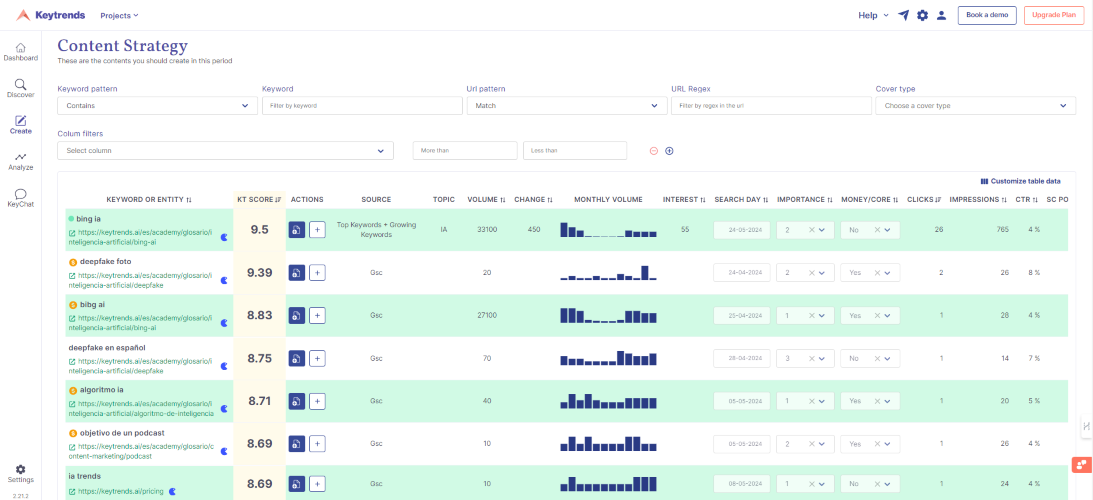
Data Hub: the data sources that feed your content strategy
You already know that Keytrends is built from data sources to extract content ideas and trends for Ecommerce. The Data Hub brings them all together:
- Your project data: all the ranking and URL data available in My Search Console Data.
- Data on new keywords or content opportunities: the Top keywords and Growing keywords extracted from your trend listings within the tool.
- Search and growth data: we add volume, growth and interest data from Google Ads and Google Trends.
- External data with which you want to feed your strategy: you will soon be able to upload external files (for example, keyword research), to incorporate them into the Data Hub.
All this cross-referenced information gives rise to the new content matrix, where each keyword or content idea is supported by data so that you can prioritise and focus your creation efforts.
How we filter your keywords and create your matrix: Keytrends Opportunity ScoreTM
To give you your content matrix we follow a whole filtering process based on our own algorithm, the Keytrends Opportunity ScoreTM:
- We detect thousands of keywords, both trends and evergreen content opportunities, for your topics or themes.
- We weight them according to the weight of the main indicators: search volume, growth percentage, level of interest or trend…
- We filter them, and we keep the 20% that have real business potential. That is, content topics that can account for up to 80% of your traffic, clicks and conversion results.
The result is a content strategy already filtered and prioritised for you. In addition, when you want to re-optimise your already published content, the Opportunity Score will give more weight to the pages that are between position 11-20 and that are most likely to increase your clicks.
4 ways to work your content strategy from the matrix
How to start working on all the content ideas once you have your matrix?
> Depending on whether you want to reoptimise content or create new content <
By default, in the content matrix appear both the keywords that are already covered and whose source in the Data Hub is My Search Console Data, as well as new keywords from the Trends listings including the My Topics Opportunities and My Realtime Topics sections.
This means that you have in one place both the content you have already covered and new content ideas, all accompanied by all the data you need to both re-optimise and create.
1️⃣ Optimise existing URLs with potential
To find out what content you have already created has potential for improvement, you will be interested in filtering it in Cover type, choosing “Covered”. This way, you will see all the queries whose origin is your Search Console account, with the URL indicated below and the “Pacman” icon next to it, where you can click to consult possible cannibalisations.
As you can see, you not only have the positioning data, but also the current keyword volume, growth or trend data and our Opportunity Score. Below we explain how to use all this data to know what to work with.
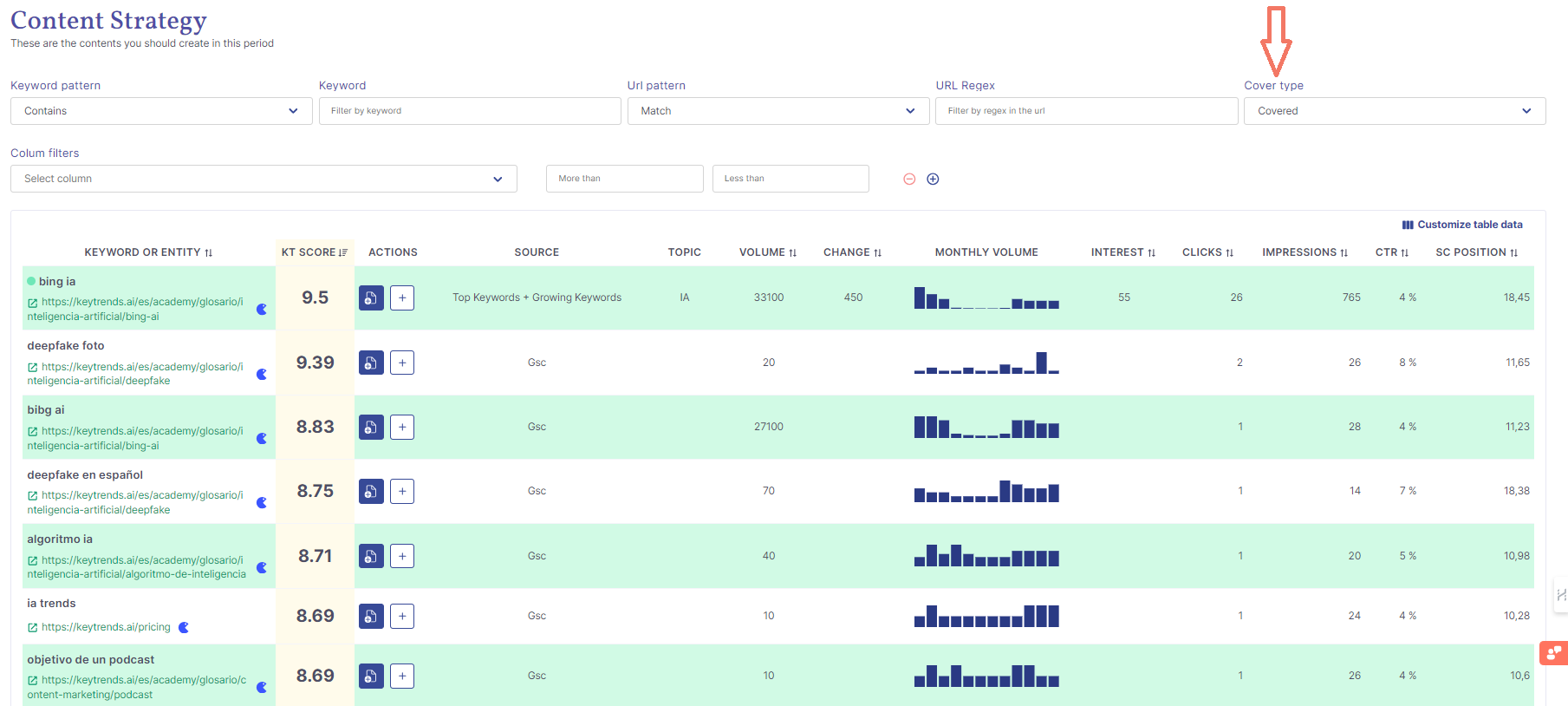
2️⃣ Create new content
If you are not interested in improving what you already have, but in covering new content opportunities or emerging trends, choose the “Uncovered” filter in Cover type. You will see the keywords to cover that Keytrends has detected for all your topics, along with the source, the configured topic and all the data you are interested in prioritising.
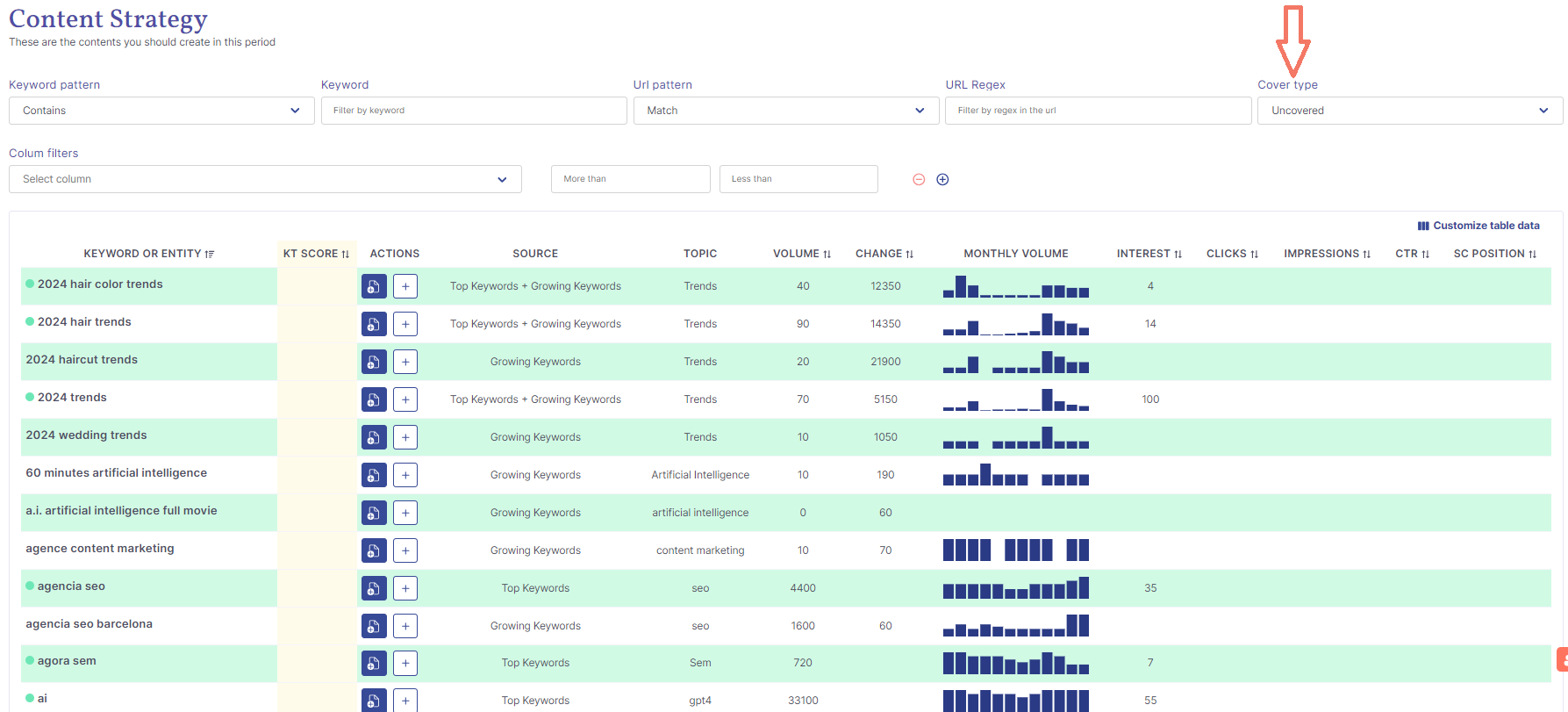
> Depending on the type of strategy: evergreen or trendy <
You may want to plan the next content to work on according to whether it covers trends, timeless or evergreen keywords. To see them, you will need to choose the “Unconvered” filter, and look at the source:
- Top Keywords (for evergreen content): the most searched queries related to your topics, extracted from the Trends Opportunities list. You know that these are keywords that are in demand throughout the year, so the best data to use as a guide is the volume.
- Growing Keywords (for fresh content): the queries that grow the most at specific peaks of interest that may be occurring at the same time, or seasonally at certain times of the year. They come from the Realtime Trends list and to evaluate them you have to look at the growth (Change) and interest (Interest).
How to choose and prioritise keywords for your content matrix
During the presentation of this new feature we mentioned many types of data that are key for you to assess which keywords in the matrix to work with:
> Keyword data <
🔍 Volume of searches (Volume): the monthly search data, extracted from Google Ads.
📈 Growth (Change): the cumulative growth data of the keyword.
⬆️ Interest in the last year (Interest): the volume of interest or trend data. We number it in the same way as Google Trends, from 0-100.
In addition, especially for Growing keywords (trends) you can look at the monthly volume bar chart 📊 over the last year to identify the moments of highest demand (and that tell you about the seasonality of that keyword).
> Keytrends keyword Score <
When your goal is to optimise existing content in your online shop, you should weigh the Google Search Console ranking indicators to detect opportunities in your content. The shortcut is our Score, a system that does this for you and gives a score to each URL created according to its potential to climb positions in SERPs:
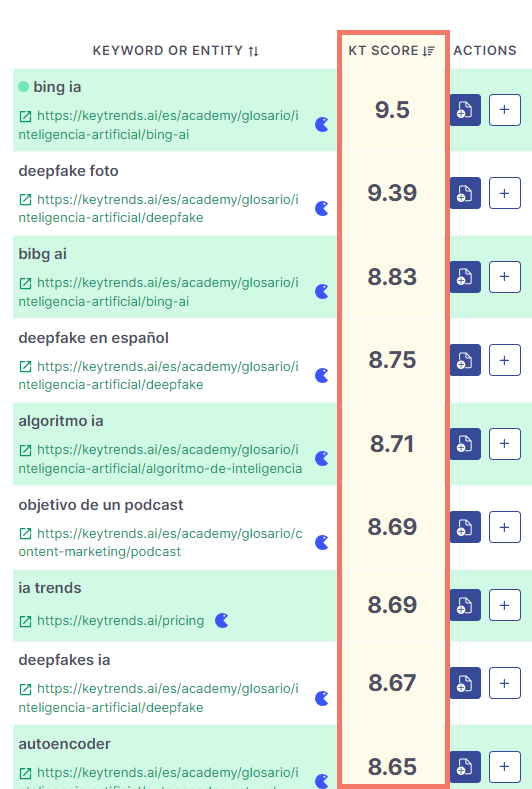
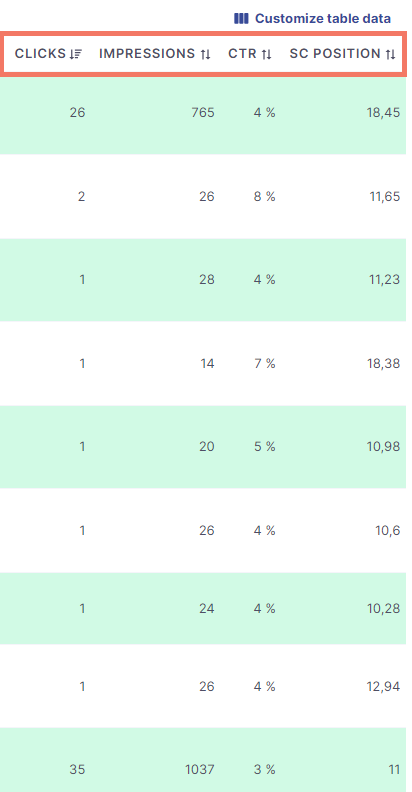
> Filters and actions to go to what you are interested in <
Ecommerce handles large volumes of quantity and therefore data. We have equipped the content matrix with filters so that you can get to what you are interested in:

- Data column filter and numerical indicator: so that you can choose the search or positioning data you want to filter by, and the numerical range it must comply with.
- Keyword filter and pattern to apply: so that you can type in a word and choose whether you want it to be contained, excluded, searched for exactly…
- Regex URL filter and pattern to apply: so you can search for a URL by choosing whether it matches or not. For example, a specific product category.
- Filtering of covered or uncovered content: as mentioned above.
Once you have detected keywords to cover or content to optimise, you can go directly to the action you want to take from “Actions”: create a new content, a brief or optimise an already published URL.
Some Ecommerce companies are already using this new functionality and more new features are coming soon – check the general release notes for more information!
You don’t have an account, or it is not available in your plan and you want to try it in your project? Send us an email or book a 30 minute demo so we can show you how Keytrends is used by the big ecommerce 👇
